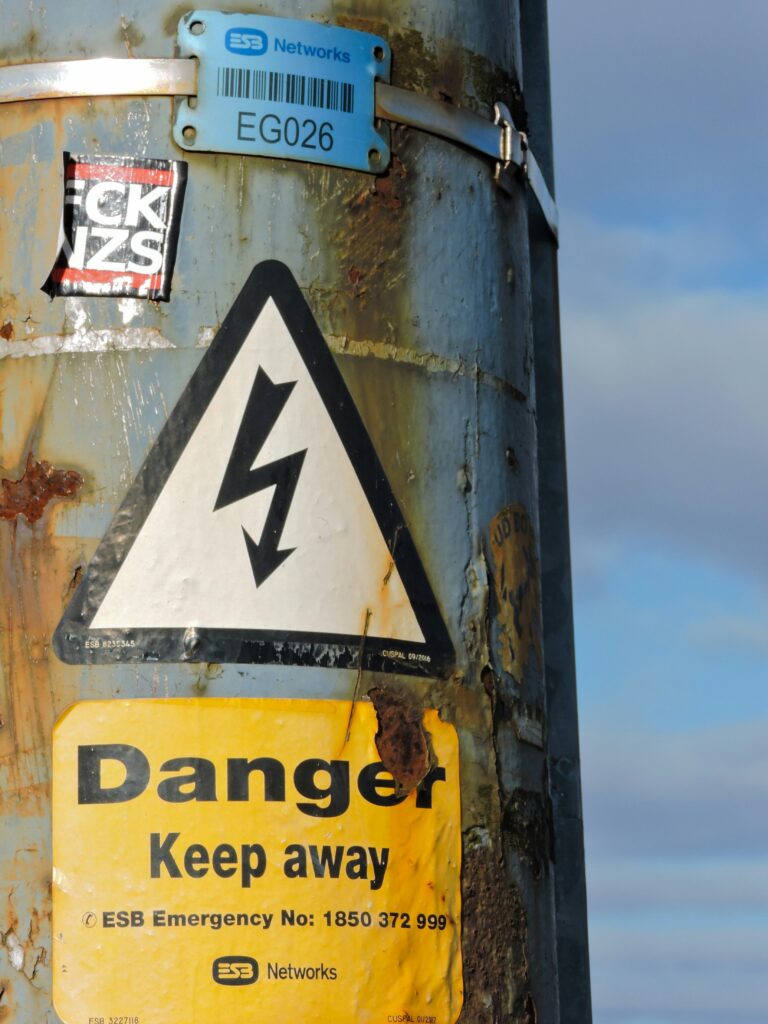Could the Wrong Electrical Labels Be Putting Your Business at Risk?

In the intricate world of electrical systems, every component, from a simple fuse box to a complex industrial control panel, is governed by a strict set of regulations designed to protect people and property. Amidst the complex wiring and high-tech circuitry, one of the most vital, yet often overlooked, elements is the humble electrical label. While it might seem like a minor detail, a label is far more than a simple identifier; it is a critical safety device, a legal document, and a fundamental part of an effective maintenance and management system. Using the wrong labels—or no labels at all—is not just an inconvenience; it is a significant risk that could lead to injury, fire, non-compliance, and severe legal and financial penalties.
This guide, inspired by CDM Labels will delve into the critical role of electrical labels and expose the hidden dangers of getting them wrong, from the workshop floor to the legal courtroom.
The True Purpose of Electrical Labelling
A well-designed electrical label serves multiple crucial functions:
- Safety: It provides immediate, clear information to electricians, engineers, and first responders. In an emergency, a label can identify live circuits, indicate isolation points, and warn of high voltage, allowing for a rapid and safe response. Without this clear information, a simple maintenance task could become a life-threatening situation.
- Compliance: Electrical work in the UK is governed by the Wiring Regulations (BS 7671), which mandate specific labelling requirements for a wide range of installations. From consumer units to industrial machinery, labels must be in place to demonstrate that the installation meets the legal and safety standards.
- Maintenance and Diagnostics: Labels provide a road map of the electrical system. They identify circuits, describe functions, and help technicians quickly troubleshoot faults, saving time and preventing costly downtime.
- Asset Management: For large-scale operations, labels are key to tracking and managing electrical assets. They can be used to track service dates, inspection results, and component specifications, which is vital for scheduling maintenance and ensuring equipment longevity.
A label is not just an afterthought; it is an integral part of the electrical system itself. When a label fails, all of these functions are compromised.
The Risks of Using the Wrong Labels
The risks associated with using incorrect or inadequate electrical labels fall into three main categories: safety, compliance, and operational.
Risk 1: The Safety Risk—When a Label Fails
The most immediate and severe risk is that of personal injury or death. An electrical label can fail in several ways, each with potentially catastrophic consequences.
- Fading and Illegibility: A standard paper or low-quality plastic label exposed to sunlight (UV), heat, or cleaning chemicals will quickly fade. A faded label is a useless label. An electrician cannot safely isolate a circuit if they cannot read the label, which could lead to an electric shock.
- Peeling and Loss: A label with an unsuitable or low-quality adhesive will inevitably peel and fall off, especially in environments with high heat, moisture, or dust. A missing label means a missing safety warning or circuit identification, turning a safe system into an unknown and potentially dangerous one.
- Chemical Degradation: In industrial environments, labels must withstand exposure to oil, grease, solvents, and other corrosive substances. A standard label will dissolve or smear, rendering the critical information unreadable. For example, a hazard warning on a chemical pump that smears could lead to a serious accident.
- Fire and Heat Resistance: Electrical equipment can get hot. Labels must be made of materials that can withstand high temperatures without melting or curling. A label that melts can gum up equipment, and in extreme cases, can even pose a fire risk itself.
The solution is simple but critical: use labels specifically designed to withstand the conditions of the environment they will be used in. This means choosing the correct materials and adhesives from the outset.
Risk 2: The Compliance Risk—Falling Foul of the Law
The UK has clear regulations regarding electrical installations. The BS 7671 Wiring Regulations (also known as the IET Wiring Regulations) specify that all electrical equipment must be clearly and permanently labelled. This is not just a suggestion; it is a legal requirement.
- Consumer Units: Every consumer unit (fuse box) must have a schedule clearly identifying each circuit. This schedule must be legible and durable.
- Isolation Points: All points of isolation, such as switches and breakers, must be clearly marked to identify what they control.
- Warning Labels: Hazard warnings for high voltage, live circuits, and other dangers must be displayed in a prominent and durable manner.
Failure to comply with these regulations can have serious consequences. During an inspection by the Health and Safety Executive (HSE), a local authority, or an insurance company, non-compliant labelling will be identified. This can result in:
- Enforcement Notices: You may be served with a notice requiring you to fix the issues within a specific timeframe.
- Fines and Prosecution: In serious cases of non-compliance, especially where it has led to an accident, the company and its directors can be prosecuted, leading to significant fines and even imprisonment.
- Invalidated Insurance: Many insurance policies have clauses that require compliance with relevant safety standards. A claim for a fire or accident may be rejected if the cause is found to be linked to a lack of proper labelling, leaving the business to face a massive financial loss.
Using the right labels is a fundamental part of demonstrating due diligence and ensuring you meet your legal obligations.
Risk 3: The Operational Risk—Costly Downtime and Inefficiency
Beyond the immediate legal and safety risks, using the wrong labels can have a significant impact on a business’s operational efficiency and bottom line.
- Increased Maintenance Time: Imagine an engineer trying to locate a faulty circuit in a large facility without proper labels. They must spend precious time tracing cables and manually testing circuits, leading to extended downtime and higher labour costs.
- Errors in Installation: A new piece of equipment may be installed incorrectly if the existing electrical system is not clearly labelled, leading to a fire, equipment damage, or a complete system failure.
- Inventory and Asset Management Issues: For businesses that track assets using labelled barcodes, a failed label means the asset is lost in the system. This can lead to a complete breakdown in inventory control, causing shipping errors, stock loss, and financial inaccuracies.
- Brand and Reputation Damage: In industries that require visual compliance, such as professional machinery or medical equipment, poorly labelled products can damage your brand’s reputation for quality and safety.
The cost of a durable, high-quality label is a fraction of the cost of a single hour of unplanned downtime or a single misshipped product. It is a small investment that delivers a huge return in efficiency and reliability.
The Solution: A Proactive Approach to Labelling
Protecting your business from these risks requires a proactive approach to your labelling strategy.
- Assess Your Environment: Take a good look at where your labels will be used. Is it hot, cold, wet, or oily? Is it exposed to chemicals, UV light, or abrasion? This will determine the material and adhesive you need.
- Choose the Right Materials: Don’t settle for a one-size-fits-all solution. Choose from durable materials like polyester, vinyl, or other synthetics for demanding applications.
- Invest in the Right Printing Technology: For long-lasting, clear print, thermal transfer printing is the industry standard. It creates a durable, smear-proof image that will not fade over time.
- Consult with Experts: A reputable labelling supplier can provide expert advice and help you navigate the complexities of materials, adhesives, and compliance requirements.
In conclusion, the wrong electrical label isn’t just an eyesore; it’s a liability. By understanding the critical role of these seemingly small components and by making a conscious decision to invest in the right solutions, you are not just buying a label—you are buying peace of mind. You are protecting your staff, complying with the law, and ensuring the long-term efficiency and safety of your entire business operation. Don’t wait for a costly mistake to prove the value of a well-chosen label.







